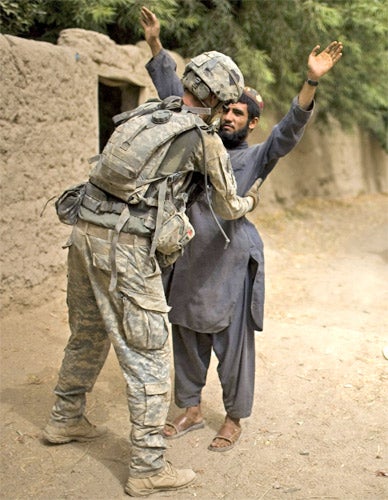Civilian death toll rises by a third in Afghanistan

Your support helps us to tell the story
From reproductive rights to climate change to Big Tech, The Independent is on the ground when the story is developing. Whether it's investigating the financials of Elon Musk's pro-Trump PAC or producing our latest documentary, 'The A Word', which shines a light on the American women fighting for reproductive rights, we know how important it is to parse out the facts from the messaging.
At such a critical moment in US history, we need reporters on the ground. Your donation allows us to keep sending journalists to speak to both sides of the story.
The Independent is trusted by Americans across the entire political spectrum. And unlike many other quality news outlets, we choose not to lock Americans out of our reporting and analysis with paywalls. We believe quality journalism should be available to everyone, paid for by those who can afford it.
Your support makes all the difference.More civilians were killed or injured in Afghanistan in the first half of this year than in any six-month spell since the war began, a United Nations report released yesterday said.
The total number of casualties soared by 31 per cent in comparison with the same period in 2009, according to data released by the UN's mission in Kabul. The report attributed the sharp rise to increased insurgent activity, as casualties caused by Nato military action fell. More than 1,250 civilians were estimated to have been killed in the first six months of 2010, while another 1,997 were injured.
The figures are another indication of the challenge facing the new Nato commander in Afghanistan, General David Petraeus, who reiterated shortly after taking charge from General Stanley McChrystal that the successful protection of civilians was crucial to the mission's success, warning that "every Afghan civilian death diminishes our cause".
General McChrystal instituted strict rules of engagement last year placing new limits on the circumstances in which troops could fire on buildings or call in air strikes. The UN report suggests that that effort yielded a 30 per cent drop in casualties caused by coalition forces.
But those figures may well have been underestimated, given the recent release of classified documents on the Wikileaks website suggesting coalition forces may have killed many civilians in unreported incidents. And inroads against the Taliban have been hard won. The report said the number of child casualties had increased by 55 per cent. The number of children killed by improvised explosive devices rose by 155 per cent.
"The human cost of the conflict is unfortunately rising," the UN envoy Staffan de Mistura said. "We are very concerned about the future because the human cost is being paid too heavily by civilians. This is a wake-up call."
In breaking down the deaths caused by the Taliban, UN analysts noted a considerable rise in assassinations of civilians in recent months, a strategy condemned yesterday by Human Rights Watch as "violating the laws of war". While the Taliban promises protection to civilians, it excludes those it believes are allied to the government.
Soon after the report was released yesterday two Afghan drivers were killed by suicide bombers in Kabul. In total at least six civilians died yesterday in insurgent incidents.
Join our commenting forum
Join thought-provoking conversations, follow other Independent readers and see their replies
Comments